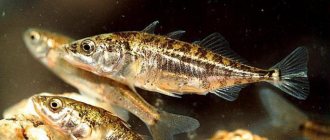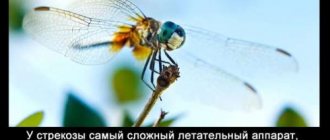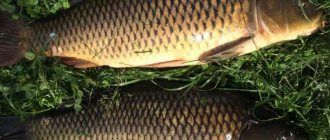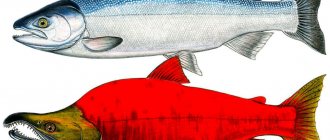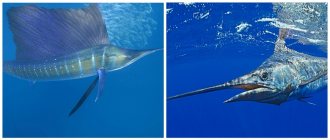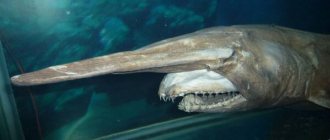The urchin fish is considered an unusual inhabitant of the seas and oceans, the name of which is fully justified by its specific appearance. In appearance, this is an ordinary fish, but sensing danger, it turns into a huge ball, covered with many sharp spines with poison.
The hedgehog fish has powerful jaws
This ability protects it from attacks by predators and makes it inedible; it can remain in an inflated state until it is sure of its safety. The urchinfish is a sea football with a lot of sharp and poisonous spines.
Origin of the species and description
Photo: Fish hedgehog
The hedgehog fish belongs to the class of ray-finned fish, the order of pufferfish. There are ten families in the order, among which one of the representatives is urchin fish. The closest relatives are puffer fish, box fish, and triggerfish. Thanks to its unique ability to instantly inflate its body, the hedgehog fish received the nickname ball fish or porcupine fish. The hedgehog fish belongs to the family Diodontidae, which has about 20 subspecies.
The most common of them:
- long-spined diodon;
- Diodon vulgaris (spotfin);
- black-spotted diodon;
- pelagic diodon.
The family of pufferfish arose more than 40 million years ago. A distinctive feature of hedgehog fish is the absence of pelvic fins, and the dorsal fin is located closer to the tail of the fish, almost at the same level as the anal fin. In hedgehog fish, the teeth consist of two hard plates, reminiscent in shape of a bird's beak, with which they are able to grind solid food.
Video: Fish hedgehog
Another characteristic feature of this family is elastic skin with prickly spines, which are located on each of the scales. Urchinfish have weak fins, so they are mediocre swimmers. They could easily have become prey for a larger predator, but a special defense system made their life safe.
You need to know this! Some representatives of the Two-Toothed family are deadly, as their insides contain deadly poison. It is so strong that even after cooking it remains dangerous. For this reason, if fishermen catch a hedgehog fish in their nets, they prefer to throw away the entire catch.
Habitat
Tetraodons are inhabitants of the rivers of Asia and Africa; their habitat ranges from Indonesia to the northern Chinese provinces. In different places this fish is known by different names: ball fish; pufferfish The fish settles in estuaries, streams, rivers and floodplains. Tetraodon is suitable for both fresh and brackish water, in which individuals live in small schools. Some of them prefer to live alone. In nature, these fish prefer to feed on snails, crayfish, crabs, shrimp and aquatic plants. They can bite fins and tear off scales from other fish.
Appearance and features
Photo: Sea urchin fish
It is worth dwelling separately on the peculiarity of the hedgehog fish, which increases in size and becomes a prickly ball. Just below the throat the fish has a special pouch with many folds. In case of danger, it swallows water or air in a matter of seconds; if the fish is on the surface, this bag is filled with water or air, and the fish itself becomes round, like a ball. This process has the ability to increase one hundred times its normal size.
The skin of fish consists of two layers: the outer layer is thin and very elastic, and the inner layer is folded and more durable. In a calm state, the spines are pressed to the body, and when danger comes, the skin stretches and due to this they straighten. Ten-day-old fry already have the ability to protect themselves in times of danger.
Outwardly, all urchin fish are similar to each other, but if you compare the subspecies of this family, there are characteristic differences between them. They are mainly distinguished by the size of adults and the location of spots on the body.
An adult long-spined urchinfish reaches 50 cm. The fry have brown spots on their bellies, which disappear when the fish reaches maturity. Adult fish have a white belly without spots. There are spots of different sizes near the eyes, on the back and on the sides. The fins of this fish are transparent or have a slight yellowish tint. The long-spined Diodon is called Holocanthus, and this subspecies is most often chosen for keeping in an aquarium.
The spotted fin diodon also has rather long spines, which makes it look like a long-necked urchinfish. It differs from its relative in that the body and fins are covered with many small spots. Even on the belly, if you look closely, you can see barely noticeable spots. They grow up to 90 cm. The black-spotted diodon reaches 65 centimeters in length. Distinctive features of this subspecies are short needles, dark spots with white edging throughout the body, two large spots on the fish’s face (at the gill slit and near the eye), the dorsal and anal fins are decorated with small spots.
You need to know this! The long-spined, spotted-finned, black-spotted hedgehog fish is considered poisonous. The skin and liver contain poison several times stronger than potassium cyanide.
The smallest representative of the urchin fish family is the pelagic diodon. Its body reaches a maximum length of 28 cm. The back and sides are decorated with small spots that are located along the entire body. The fins are pointed at the ends, with small dark spots. There is no evidence that the pelagic diodon is a poisonous fish.
Skeleton
The main feature of the hedgehog fish is its spines. In this fish, each scale is a bony shield equipped with a sharp spine. The scales are attached to the skin movably so as not to interfere with the fish’s swelling at the moment of danger. However, the plates of scales continue to completely cover the entire surface of the fish’s body, making up real bone “armor”. And the moving needles, standing upright, add problems to the enemy.
Bone plates – scales – fastened together, as well as skull bones make up the skeleton of the hedgehog fish.
Where does the hedgehog fish live?
Photo: Spiny hedgehog fish
Various members of the Diodon family prefer tropical and subtropical climates.
They can be found in the Pacific, Atlantic, Indian oceans, namely:
- Quiet - southern Japanese coast, Hawaii;
- Atlantic - Bahamas, USA, Canada, Brazil;
- Indian - Red Sea, coast of India and Australia.
Adult fish prefer to stay on coral reefs, since they serve as shelter during the daytime and as a dining room at night. They can be found at depths of up to 100 m. In contrast, diodon fry stay on the surface of the water, seek shelter in algae and go to the bottom when they mature.
Of all the subspecies, only the pelagic diodon is not tied to a specific place and prefers to drift with the current most of the time. Diodons are weak swimmers and do not know how to swim against the current, so they are often carried by a strong undercurrent to the Mediterranean Sea or the European coast.
Diodons are predominantly marine inhabitants, but some of them have managed to adapt to fresh water and can be found in the waters of the Amazon or Congo. Despite the fact that hedgehogs do not often become prey for other fish, they still settle in places where they can safely hide so that no one disturbs them during the day.
Lifestyle
A predator cannot be called a civilian. He behaves quite aggressively. To prevent the hedgehog fish from eating other inhabitants of the aquarium, you need to place it with its relatives.
Pufferfish prefer to hide in the shadows. They are active in the evening and at night. The hedgehog fish often hides in algae. If there are caves in the aquarium, she swims into them.
Tetradon becomes ready to reproduce when it turns 1 year old. It is better not to place 2 males in one mini-reservoir, as a fight for territory will begin. For propagation to be successful, you need to plant algae, hornwort or cryptocoryne. To stimulate spawning, the Pufferfish is fed snail and meat. Individuals reproduce at a temperature of + 28 degrees.
The hedgehog fish should be placed in an aquarium with its relatives, as it can eat other fish
It is important to know how to distinguish a female tetradon from a male. The female specimen is larger and has pronounced spots on its body. At the beginning of spawning, the male chases the female. If she does not behave aggressively, the couple swims to the bottom and hides behind thick algae.
What does hedgehog fish eat?
Photo: Fish hedgehog
Diodons, despite their modest size, are predators. Their main delicacy is coral shoots. Thanks to the structure of their teeth, they are able to bite off small pieces of coral and grind them. It must be said that only a small part of this food is digested. Most of what was previously coral reef remains in the stomach. In some cases, up to 500 g of such remains were found in the stomach of diodon caught by fishermen.
In addition, the diet of urchin fish includes small mollusks, sea worms and crustaceans. If the caught prey is hidden in a shell or protected by a shell, it costs the fish nothing to chew through this protection. In addition, diodons can attack other fish, biting off their fins or tails.
If Diodon is kept in artificial conditions, the diet includes fish food that contains algae. You should also be able to grind down your teeth; for this purpose, shrimp are included in your daily diet. Without this treat, Diodon can become aggressive, attack other inhabitants, and begin to overgrow its teeth.
You need to know this! Hedgehog fish do not disdain carrion, and in some cases they can attack their own relatives.
Poisonous or not
The hedgehog fish is a poisonous sea creature. The poison, along with the thorns, allows it to protect itself from predators. The poison produced by Diodons is called tetrodoxin. The amount of toxic substances contained in one individual can be enough to kill 30 people.
Poisonous in the body of pufferfish are:
- Quills (or spines) on the surface of the body.
- Poisonous mucus (released into the water at the time of danger).
- Skin, liver, entrails.
The poison is quite strong. Even with superficial wounds, if a swimmer recklessly grabs a hedgehog fish, serious consequences can occur.
If caught fish is eaten, an eating disorder is guaranteed. Possible death. Even long-term heat treatment of caught fish does not guarantee neutralization of the poison.
Representatives of this family have no commercial significance. Not used in cooking.
Interesting fact There is a persistent misconception that hedgehog fish and dog fish belong to the same species. Yes, the fish look very similar. But dogs (they are also the legendary puffer fish) are the Four-Toothed family, and the hedgehog fish are Two-Toothed.
Features of character and lifestyle
Photo: Sea fish urchin
These fish are not those who prefer to gather in schools; rather, on the contrary, they stay apart and avoid meeting even with their own kind. Only during the spawning period does the male get closer to the female. Their life goes as follows: Diodon spends the day in a safe shelter, where he cannot be disturbed, and only with the arrival of night does he go out hunting. Diodons have developed good eyesight, which helps them find their prey at night.
Possessing such an unusual and effective method of protection, the hedgehog fish could feel safe in any conditions and swim without fear. They actually don't like to be puffed up. When a Diodon uses its defense, it becomes helpless until it returns to its normal state. There have been cases where dead fish were found that were never able to deflate after the danger had passed.
Despite their unsociability, hedgehog fish living in captivity quickly get used to humans and love to swim to the surface, begging for a tasty treat. It must be said that they do this often, since in the world of fish they are real gluttons. Their large “pug” eyes are often compared to the famous look of the cat from the movie “Shrek”.
Interesting facts about sea urchins
Amazing creatures, sea urchins, have long tormented the minds of zoologists. These underwater animals are very interesting from a biological point of view, and the conditions in which some of their species live seem truly extreme. But people readily collect them, especially in shallow waters, as sea urchins are an enviable food item in some countries. However, most tourists who have tried them do not share this opinion.
Facts about sea urchins
- In total, there are about 940 species of them in nature.
- The largest sea urchins reach 30 cm in diameter, while the smallest ones do not exceed 2 cm.
- The first sea urchins appeared on Earth about 450 million years ago.
- The waters of Russian seas and oceans are home to 20 species of sea urchins.
- Their close relatives, according to scientists, are sea cucumbers (interesting facts about sea cucumbers).
- Some types of sea urchins are poisonous and therefore very dangerous. The poison is contained in the mucus on their spines.
- If you step on a sea urchin, its spines, like fragile glass, break into many fragments, digging into the body. Removing them is a very difficult and painful operation that only experienced doctors can do.
- These animals live only in highly salty waters, so where large rivers partially desalinate the seas and oceans into which they flow, sea urchins are not found.
- The needles serve them not only for protection, but also for movement, as well as for obtaining food.
- In the Caspian and Black Seas, sea urchins are not found at all (interesting facts about the animals of the Black Sea).
- By the growth rings on the shell of these animals, you can determine their age in the same way as by the growth rings of trees.
- Some types of sea urchins are real long-livers, they live up to 30-35 years.
- They are found not only in warm waters. Some sea urchins even live in Antarctic climates.
- Most of them lay eggs, but some give birth to live offspring, like mammals.
- Sea urchins are able to drill holes for themselves even in strong granite rocks.
- They are readily eaten by seals, birds, fish, lobsters and starfish (interesting facts about starfish).
- The sea urchin has over 1,000 tiny legs with suckers on them.
- They grow throughout life.
- These animals are able to easily withstand the monstrous pressure of the water column. Research probes have detected them at depths of up to 7 kilometers.
- Sea urchins are completely indiscriminate when it comes to food. They eat everything from algae to carrion. Some of them even eat each other.
- At low tide, sea urchins usually either hide in holes or bury themselves in the sand.
- The record holder for the length of needles among all sea urchins is the diadem urchin (the length of the needles is up to 70 cm with a shell diameter that is 10 times smaller), and in flat urchins their length does not exceed 2 millimeters.
- These animals are very useful for the environment. They not only absorb carbon dioxide, but also reduce radiation levels (interesting facts about ecology).
- All of their species, except one, know how to roll over if they are knocked over.
- The eyes of sea urchins are located in the upper part of the body, and the mouth is located in the lower part. Their teeth are tiny, but very sharp.
- Diadem sea urchins glow in the dark.
- Sea otters and sea otters eat so many sea urchins every day that their entire insides turn purple due to the pigment contained in these echinoderms.
- Sea urchins acquire the ability to reproduce only 2-5 years after birth, depending on the species.
- Most of them are nocturnal.
- Some small fish have learned to lead mutually beneficial coexistence with sea urchins. They hide between its needles in case of danger, and in response they eat the parasites that cling to it, which the hedgehog cannot get rid of on its own.
Social structure and reproduction
Photo: Spiny hedgehog fish
Diodons reach sexual maturity at the age of one year. The male's courtship consists of him starting to pursue the female. After the female has reciprocated, the male begins to gently push her closer to the surface of the water, where the actual laying of eggs occurs.
After this, the male fertilizes her with milk from his gonads. One female is capable of laying up to 1000 eggs. Only some of them are fertilized. Immediately after spawning, fish lose interest in their future offspring, as well as in each other.
The ripening of the eggs lasts 4 days, after which fry emerge from them. From birth, they are similar in appearance to their parents, but at this stage of life their body is protected by a thin shell. After about ten days, the shell falls off to be replaced by spines. This process takes three whole weeks.
After this time, the baby hedgehog fish is already completely similar to its parents and knows how to inflate in a moment of danger. It differs only in more intense coloring. Until small fish reach a certain size, they prefer to stay together. In order not to become someone's prey, at the moment of danger they huddle together. At the same time, they become like a large ball with spines. This scares away the predator.
Until a certain age, small diodons stay closer to the surface of the water, where the water warms up more. Having matured, the fish go to the bottom, closer to coral reefs, where they lead the usual lifestyle for diodons.
You need to know this! In captivity, hedgehog fish reproduce extremely rarely, because this requires certain conditions.
How to choose?
Before you start searching for and purchasing diodon, it is worth analyzing whether you can create the necessary habitat for this fish and create a healthy diet. If there are already inhabitants in a marine aquarium, you need to look at their compatibility with the urchin fish.
It is important! Finding a hedgehog fish is not so easy: you will have to go to specialized stores with a wide range of exotic pets.
When purchasing, you need to carefully examine the fish for physiological defects and injuries. It is also important to pay attention to the behavior of the fish: lethargy or, conversely, excessive nervousness can indicate the complex nature of the individual or its health problems.
The last step is to compare the store data (type name, age, etc.) with the real state of affairs. You need to remember the key features of the main varieties so as not to make a mistake in choosing the desired pet.
Natural enemies of hedgehog fish
Photo: Fish hedgehog
Adult diodons have practically no enemies, since other predators are afraid to attack them. Only large predatory fish - sharks, dolphins, killer whales - risk attacking them. Such cases are rare. Only for them, diodone becomes the last meal; it gets stuck in the throat or injures the esophagus or stomach. As a result, the fish dies.
Perhaps the main enemy for exotic fish is humans. A favorite pastime of divers is inflating urchin fish. In addition, diodons are caught for making exotic souvenirs. They are used to make lampshades or Chinese lanterns to later sell to foreign tourists.
Hedgehog fish is a favorite delicacy among many peoples and an exotic, expensive dish in Asian restaurants. Some people prefer to marinate pieces of fish skin in a spicy marinade, while others fry pieces of meat in batter.
The fry have much more enemies. Very few fish survive from one litter to independent life. The favorite delicacy of tunas and dolphins are urchin fry.
You need to know this! On one of the Indonesian islands, one tribe made fearsome helmets for their warriors from hedgehog skin.
Keeping in an aquarium
Not only eating, but also keeping these dangerous aquatic inhabitants at home is popular among modern society. Therefore, “hedgehogs” can be found in large aquariums.
Experts recommend placing spherical inhabitants of aquatic fauna in containers of at least 20 liters or more.
Surely you are interested in the question, what do these fish feed at home? Their menu can be varied :
- worms;
- snails;
- shellfish;
- special food for fish.
